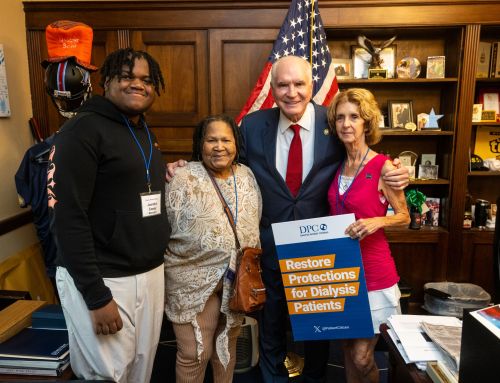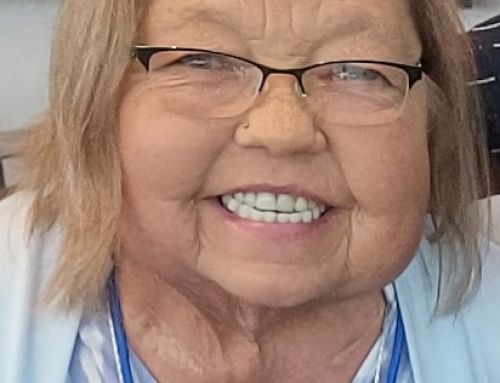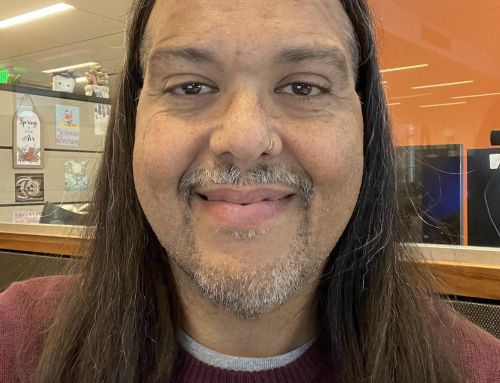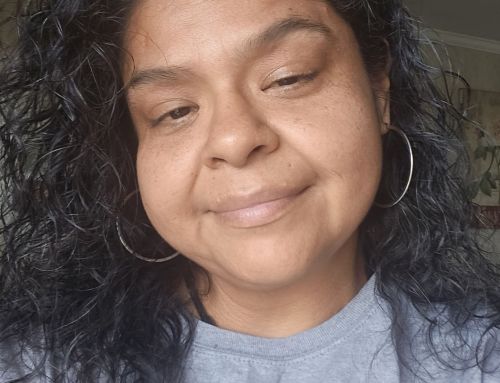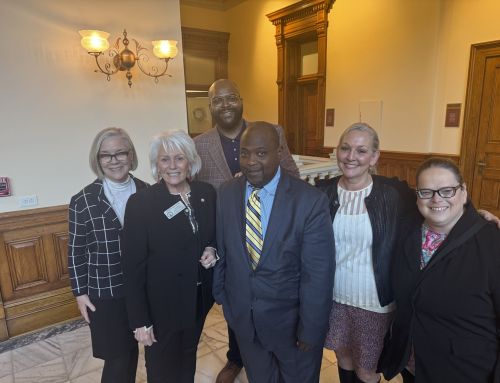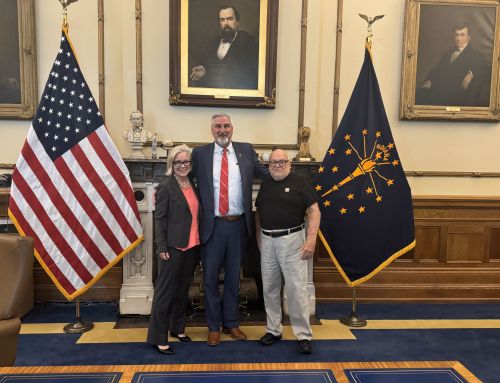Last month, DPC sent a letter commenting on the “Notice of Benefit and Payment Parameters for 2017” proposed rule. This annual rule by the Centers for Medicare and Medicaid Services (CMS) contains proposed changes to the exchange plan coverage of the Affordable Care Act. DPC’s letter focuses on the importance of insurance coverage and network quality for end-stage renal disease (ESRD) patients.
One issue the letter comments on pertains to network adequacy. Network adequacy describes an insurance plan’s ability to provide a sufficient amount of in-network providers to subscribers in the plan. Suggestions to improve network adequacy include requiring all states to conduct network adequacy reviews with a set list of standards and fixing any flaws in insurance plans before they are made available to consumers. Another concern regarding the adequacy of some exchange plan coverage is the exclusion of specialists that ESRD patients need for treatment, such as nephrologists.
Secondly, restrictive networks can lead to above average travel times for dialysis patients. DPC asked CMS to adopt a standard from California that requires a care site to be within 15 miles or 30 minutes from an enrollee’s residence or workplace.
DPC also stressed that private insurance plans must remain available for ESRD patients. According to data from DPC’s July 2015 patient survey, patients with private plans were better able to access the health care they needed. The full comment letter is available to read below:
Andrew Slavitt
Acting Administrator
Centers for Medicare and Medicaid Services
Baltimore, Maryland
Re: Notice of Benefit and Payment Parameters for 2017 Proposed Rule
Dear Mr. Slavitt:
As America’s largest patient-led organization representing 29,000 dialysis patients and family members, Dialysis Patient Citizens (DPC) strives to improve the quality of life for all dialysis patients through education and advocacy. Thank you for the opportunity to comment on the “Patient Protection and Affordable Care Act: HHS Notice of Benefit and Payment Parameters for 2017” Proposed Rule as it pertains to people who will need coverage for end-stage renal disease through an exchange plan.
Network Adequacy
We applaud HHS for recognizing the need to strengthen network adequacy standards and for proposing a number of new protections that would apply for the 2017 plan year. While millions of Americans have gained health insurance over the last two years, that coverage can be hollow if they cannot access the covered benefits promised to them. While the National Association of Insurance Commissioners has now completed its work on its updated Health Benefit Plan Network Access and Adequacy Model Act, it is not yet clear how many states will adopt it in whole or in part. We strongly encourage HHS to move forward with strong network adequacy standards that can serve as a floor of protection for consumers enrolled in QHPs beginning in 2017.
We offer the following specific comments and recommendations with respect to HHS’s proposed network adequacy requirements.
Many of the health plans being offered through the Federally Facilitated Marketplace use “narrow” provider networks. We recognize that this technique may be utilized to help reduce the cost of care, and that patients can benefit if networks exclude inefficient or low-quality providers. But protections are needed to ensure that narrowed networks are not inadequate networks.
HHS is proposing to rely on FFE states to review QHPs for network adequacy, using quantitative time and distance and provider-enrollee standards determined by the states. In those FFE states that either do not review for network adequacy or set minimum quantitative standards, HHS would conduct the review using a federal default time and distance standard. HHS indicates that it will provide more details on the specific criteria and process for meeting the standard in the annual Letter to Issuers. We look forward to reviewing the default standards in the 2017 draft Letter to Issuers.
We strongly support requiring an affirmative review of QHPs, using a set of minimum quantitative standards. We note that the statute as well as section 156.230(a)(2) of the federal regulations require all issuers offering QHPs to maintain a network that is sufficient in number and types of providers to assure that all covered services are accessible without unreasonable delay. We therefore believe that the final rule should be revised to require all states, including those with SBEs, to conduct network adequacy reviews of QHPs using a minimum set of quantitative standards. A number of states with SBEs do not currently use quantitative standards for evaluating network sufficiency.
It is critical, especially in this changing health care environment with rapidly evolving network designs, that regulators actively seek to identify and address network adequacy problems within a plan’s network before the product is ever sold to and relied upon by consumers. In addition, without measurable criteria, insurers and regulators within a state may have very different interpretations of what is sufficient. Such subjectivity would make it difficult for both regulators and consumers to argue that a given network is inadequate.
DPC has two particular concerns with network adequacy. First, like many other disease-affinity groups, we are worried that plans may exclude specialists—in our case, nephrologists—to discourage patients with the applicable illness from enrolling.
Second, dialysis facilities must be readily accessible to patients. Since dialysis patients must typically undergo treatment three times per week, travel to and from a dialysis facility is far more burdensome than travel to physician offices or other sites of care that are visited less frequently. If a health plan limits its network to a single dialysis organization—as we fear some may do, in order to obtain lower prices—patients may not have access to the clinic most convenient to them.
For example, imagine a dialysis patient living in Princeton, Illinois, a rural community in the western part of that state. The nearest clinic is a Fresenius facility located 15 miles away. But if a health plan contracted only with DaVita, the nearest in-network facility would be 41 miles away. Similarly, for a patient residing in Tampico, Illinois, the nearest clinic is a DaVita facility located 15 miles away, but if a health plan contracted only with Fresenius, the nearest in-network facility would be 36 miles away. The service areas of these two large dialysis organizations do not always overlap in sparsely-populated regions.
We urge CMS to adopt the California Department of Managed Health Care’s standard of accessibility, which is that care sites be located within 15 miles or 30 minutes travel time of enrollees’ residence or workplace, as the test of network adequacy for dialysis facilities. Using the examples of the rural Illinois patients, the plan should be required to cover treatment in the nearby clinic on the same terms to the patient as it would cover treatment at the in-network facility further away. We should also note that by requiring use of inconveniently located facilities, plans could discourage enrollment of expensive ESRD patients.
We are enthusiastic about HHS’s proposal to provide a rating of each QHP’s relative network breadth on HealthCare.gov, and we strongly urge HHS to move forward with implementing this system. Currently, consumers have no way of knowing what the relative breadth of their plan’s network is. Particularly with the growth of plans with narrow networks and no out-of-network coverage, it is critically important that consumers understand the network that comes with the plan they are choosing and the trade-offs that come with that choice. Plans with narrow networks may be an appropriate choice for some consumers, but they should know that is what they are buying and that the choice may result in higher out-of-pocket costs later if they need to go out-of-network.
We strongly support HHS developing standard definitions for measuring the breadth of provider networks, along with a clear, concise rating system for communicating the breadth of the networks to consumers. Such a system will enable consumers to make better, more accurate comparisons of the QHPs available to them.
It might be helpful to post pie charts depicting what percentage of providers in a given market are included in a network. For instance, pie charts could include the proportion of primary care physicians, specialists, hospitals, dialysis facilities and the like, alongside charts for other available plans to so the consumer can compare the relative network inclusiveness. When selecting a plan, consumers may be able to search a directory for a particular doctor who may be treating the patient, but consumers won’t be able to anticipate the names or types of specialists to whom they may need access in the event of an acute injury or serious illness.
Finally, a very important disclosure about narrow networks will be information about how providers are selected. We know that some insurers have worked in good faith to develop “episode grouper” algorithms to identify efficient, high-quality providers with an eye toward rewarding them with higher reimbursements or encouraging patients to see them. CMS has already begun identifying high- and low-performing hospitals, dialysis facilities, and other institutional providers using objective criteria, and is currently working on public-domain episode groupers that can be used for the “MIPS” that is due to go into effect soon.
If health plans are constructing networks based on reliable measures of quality and efficiency, that is laudable and should be welcomed by consumers. But if a network is designated purely on the basis of provider prices, without taking quality into consideration, consumers need to know this before they purchase the plan. We suggest that CMS survey plans on how they are making provider selections, and see if this information can be synthesized to create categories best describing how a particular network was assembled. This information could then be presented on exchange websites.
Third Party Premium Payments
Commercial health insurance is the foundation of health care coverage in America. An estimated 197 million Americans were covered by private insurance in 2013, the last year for which statistics are available. While dialysis patients will always be grateful that Medicare benefits were extended to them in 1972, most prefer to retain their private coverage for as long as possible.
There are several disadvantages to Medicare relative to commercial insurance. First, there is no coordination of care in fee-for-service Medicare, and ESRD patients are not permitted to enroll in Medicare Advantage managed care plans. Second, Medicare’s 1965-vintage benefit structure, which pays about 80 percent of expenses, was designed for episodic acute care but leaves considerable out-of-pocket costs for those with chronic conditions like ESRD. Further, Medicare Savings Program assistance to financially vulnerable patients is severely limited.
The Social Security Act, and by extension, the Affordable Care Act, assures people whose kidneys fail that if they like their commercial health plan they can keep it for at least 30 months. Surveys of dialysis patients find that they do like their private insurance plans. In DPC’s July 2015 survey of 650 patients we asked several questions from the Consumer Assessment of Health Plan Survey (CAHPS) to gauge relative satisfaction with their coverage. We found:
- 77 percent of patients rate their private health insurance as the “best health insurance plan possible,” compared to 71 percent for Medicare.
- Medicare beneficiaries are more than twice as likely as private health plan members (13% versus 5%) to report having trouble getting health care that they wanted or needed.
- Medicare beneficiaries are more likely than private health plan members to report difficulties in getting the specific medication they need, difficulty getting someone on the phone to answer questions, and delays in receiving care or treatment.
According to the Bureau of Labor Statistics, the average private health insurance plan has an actuarial value of 88.9 percent, significantly higher than Medicare’s 80 percent. Health maintenance organizations—which are NOT available to ESRD patients through Medicare—have an average actuarial value of 91.8 percent. Thus, Medicare requires considerably higher cost sharing for chronically ill patients than commercial insurance. Most Medicare beneficiaries purchase supplemental insurance, known as Medigap, to help with cost sharing, but Medigap plans are not available to under-65 ESRD patients in half of the states.
ESRD patients’ rights to be free from discrimination must be enforced. Federal regulations (C.F.R § 156.12) provide that a plan does not provide essential health benefits “if its benefit design, or the implementation of its benefit design, discriminates based on an individual’s age, expected length of life, present or predicted disability, degree of medical dependency, quality of life, or other health conditions.” Social Security Administration guidelines clearly state people that rely on renal replacement treatment to live qualify as disabled.
Dialysis treatment is an “essential health benefit” (EHB) under state and federal law. The group health plans that are benchmarks for a state’s EHB cover dialysis services, and their EHB benchmark designation extends the 30-month coverage mandate to the individual market.
Access to ACA Exchange plans is particularly important for low-income ESRD patients. Medicare Savings Program assistance is not as generous as are subsidies in the exchanges for patients with income between 100% and 200% of the poverty line. For persons earning between $11,000 and $23,000 a year, the ACA guarantees that exchange health plans cover at least 87% of average medical expenses; the percentage is higher still at 150 percent of FPL. Further, under the ACA, private health insurance plans have out-of-pocket maximums; fee-for-service Medicare does not.
There are also significant differences in access to transplantation by insurance type. Patients with commercial insurance have 40% greater odds of being placed on the transplant list than patients with Medicare; among African Americans, patients with commercial insurance are three times more likely to be placed on the list than patients covered by Medicare.
Recently we have seen several insurance companies institute policies to prevent charitable organizations like the American Kidney Fund from making payments for a patient’s insurance premiums. DPC believes that these payments are protected by anti-discrimination laws and prior administrative rulings, in that refusal to accept them is merely a pretext to exclude enrollees with the medical conditions associated with each charity.
Any “guardrails” related to charity payments must be limited in scope to preserve the integrity of marketplace plans as “real” insurance and not an inferior product that is incapable of paying for the care of sick people. CCIIO must not set a precedent that implies that private insurance markets are somehow unequal to the task of caring for the chronically ill. Such a message would undermine one of the three legs of the ACA “stool”—the ability of all comers to enroll in coverage—and could have ripple effects emboldening insurers to discriminate against ESRD patients with other types of insurance.
If you have any questions or comments, please contact me or our Director of Government Affairs, Jackson Williams.
Yours very truly,
Hrant Jamgochian
Executive Director





